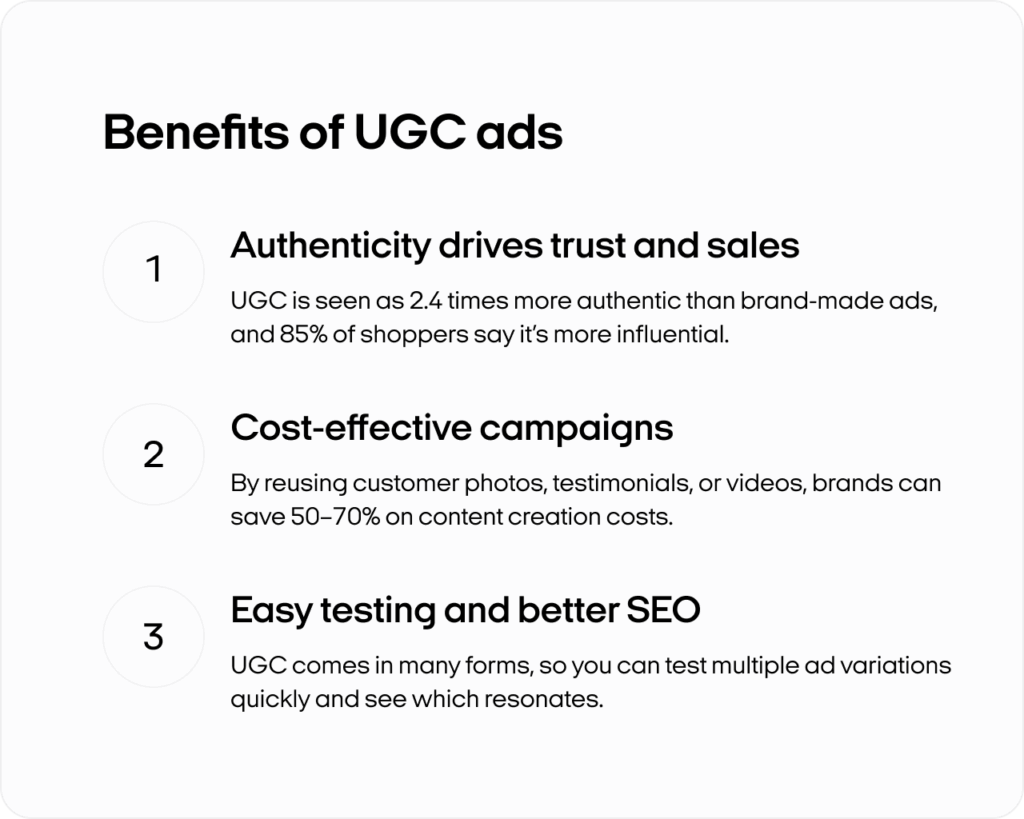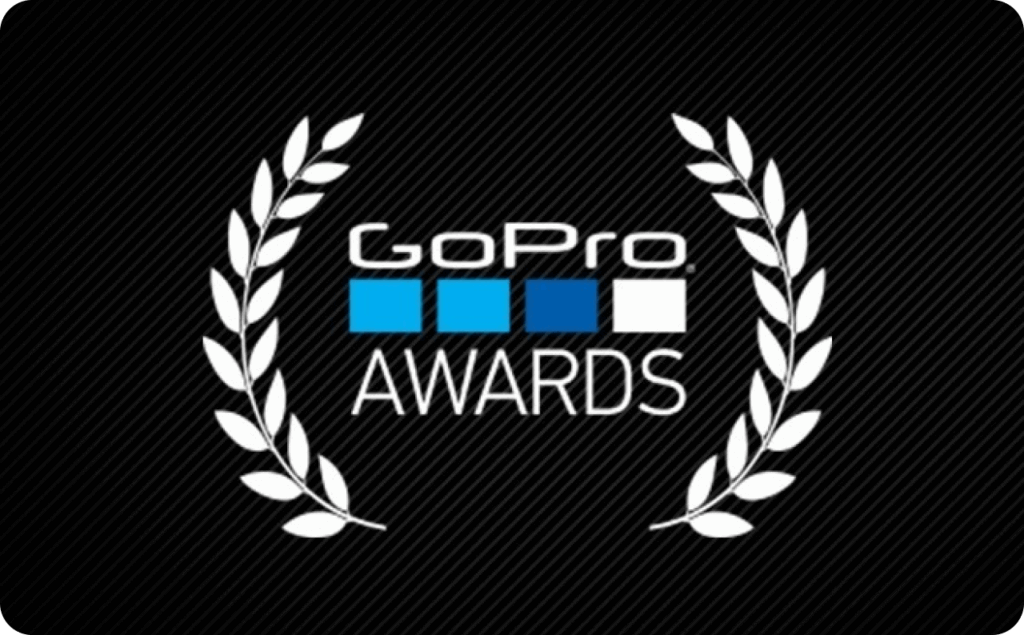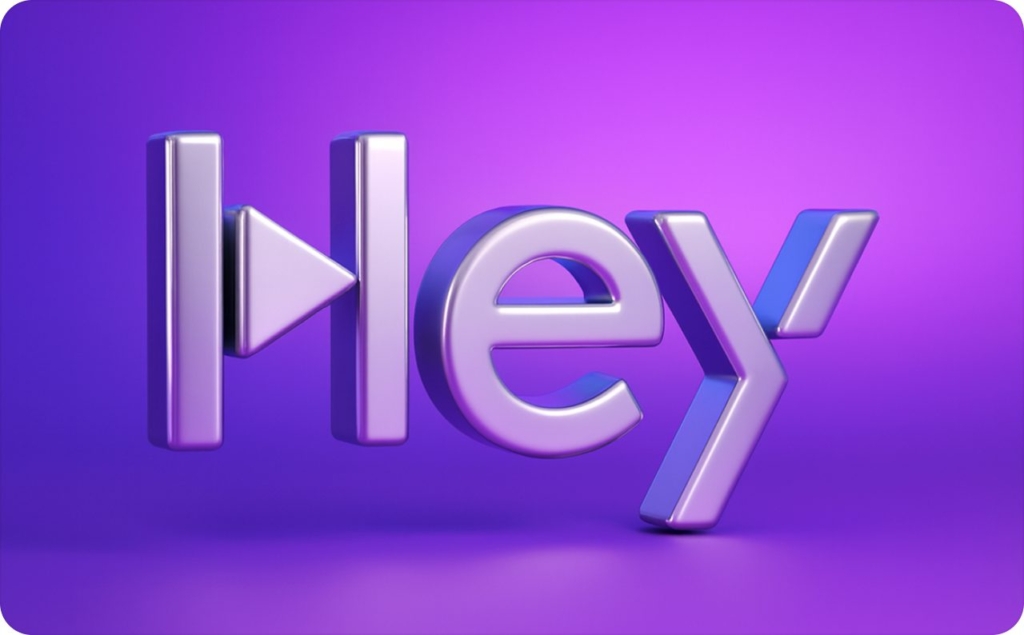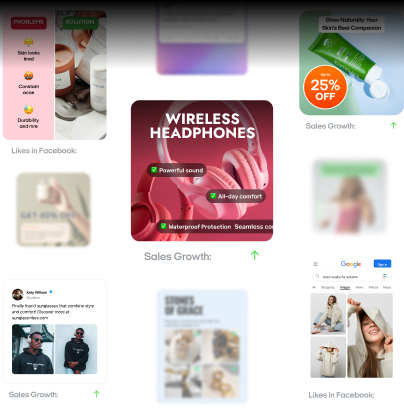Why UGC ads are the key to better ROI in 2025: 8 main benefits & 7 best practices
Ever wondered what UGC ads are and why everyone’s talking about them? UGC stands for user-generated content. If you’ve ever trusted a friend’s Instagram story more than a polished ad, you already know how powerful it can be. In fact, 92% of people trust personal recommendations more than traditional ads — and that’s exactly why UGC is changing the way brands build trust and connect with people.

What makes UGC video ads so effective for modern marketing?
UGC ads are a form of cost-effective advertising that use user-created brand assets, like product reviews, unboxing videos, and social media posts. Because these ads come from real customers, they build brand trust quickly and tap into social proof: people tend to believe in what other real users say.
If you’re looking to increase user engagement without spending a fortune, this approach can be a game-changer. Traditional ads can feel like noise in a crowded feed. UGC cuts through by delivering authentic brand content that feels personal. It invites people to engage. It is not because they’re being sold to, but because they see others like them genuinely enjoying a product or service.
They’re also incredibly efficient: brands can save up to 70% on content creation costs by leveraging existing customer content. And it’s not just about savings, UGC drives results. Campaigns using UGC can boost return on ad spend by 4.5x, lower cost-per-click by 50%, and increase click-to-purchase conversion rates by 10%.
Take this example: a small coffee brand notices a loyal customer has posted a morning routine video featuring their beans. They ask permission, then run the clip as a Facebook ad with the caption: “Watch how real coffee lovers start their day.” The result? A 30% higher click-through rate compared to their previous branded content. That’s the impact of community-driven storytelling in action.
How UGC performs across platforms
Even though UGC looks similar across the board, the strategy changes depending on where you share it:
- TikTok: Short, snappy videos are the heart of community-driven content on this platform. Trending sounds and quick challenges attract viral attention
- Instagram: Visually appealing stories and Reels work best. Mix in everyday user experiences with creative edits to keep it fun
- Facebook: Longer, testimonial-style ads that read like personal posts usually get more engagement, especially for older audiences
No matter which platform you choose, creating authentic brand content with user-generated media helps your ads blend in while still standing out.
What counts as a UGC ad?
UGC ads come in many formats, and each serves a unique purpose within your funnel. Customer reviews and testimonials are one of the most powerful forms of social proof. A five-star review or a rave tweet can be transformed into a scroll-stopping sponsored post.
Photos and videos from real users are unfiltered product shots, tutorials, and “how I use it” clips. They resonate more because they don’t feel scripted. These user-created brand assets thrive on TikTok, Instagram, and even YouTube Shorts.
Branded hashtag challenges encourage your community to create. A campaign like #MyMorningRoutine invites users to post videos, which you can later turn into paid ads. This not only builds content, it builds connection.
User comments and Q&A threads can become a compelling ad, especially a product recommendation in a Reddit thread or a helpful comment on Facebook. These show how real people talk about real problems, and how your brand solves them.
What’s next?
Now that you know how to use UGC in paid ads, it’s time to dig deeper into the benefits of UGC advertising. Lets learn how to build a devoted audience and boost ROI metrics across the board. If you’re eager to get started, check your social mentions or branded hashtags. You might already have campaign-ready UGC waiting for you.
Benefits of UGC ads for modern brands
Ever wonder why user-generated content ads feel more trustworthy than polished commercials? It’s because real customers share genuine moments instead of scripted pitches, which resonates with today’s skeptical audiences.
Build trust with real people
UGC relies on real opinions and experiences instead of scripted campaigns. Consumers are 2.4 times more likely to call UGC authentic compared to brand-made content. This authenticity is why 85% of shoppers find user-generated posts more influential. Take Glossier, for example: they grew by spotlighting unfiltered fan photos and reviews, turning everyday customers into the faces of the brand.
Get more clicks and shares
Relatable stories spark higher engagement, actually, about 28% more than typical ads. People are drawn to content that feels personal, like a friend’s selfie review or a quick demo at home. By weaving these real moments into your ad messaging, you can encourage more clicks, comments, and shares than you would with a highly polished promo.
Save money with customer content
UGC is a budget-friendly way to keep your marketing fresh. You can save 50–70% on creation costs by reusing customer photos, testimonials, or videos. Instead of hiring expensive photographers or influencers, you tap into the content your fans already produce. That means more room in your budget to test new ideas — or simply keep expenses low.
Test ads quickly and cheaply
Because UGC comes in so many forms, like unboxing clips, Instagram Stories, quick product selfies, etc., you can test different ad variations without blowing through your budget. One person’s behind-the-scenes look might highlight design details, while another’s post focuses on practical uses. Track which style sparks more clicks or conversions, then optimize your campaigns faster and smarter.
Boost sales with honest voices
Authentic content doesn’t just encourage engagement, it also drives conversions. UGC ads can see a 400% higher click-through rate than standard brand promos, and some businesses report up to an 18% jump in revenue when they add user-based content to their funnels.
Even a few genuine testimonials during checkout can boost conversions by 10%, showing potential buyers that real people trust your product.
Show up higher in search results
UGC also helps your website rank better on search engines. That’s because user-created posts and reviews often align with the exact terms people type into Google. Plus, when customers share or link to your site, it signals to search algorithms that your content is valuable, which can improve your overall visibility.
Win over today’s shoppers with authenticity
Gen Z and millennials see through hype. They want real recommendations and are quick to dismiss ads that look too perfect. By showcasing everyday use-cases and candid reviews, you speak their language. You can make your brand stand out in busy social feeds. This personal touch can lead to stronger community engagement and long-term loyalty.
Turn happy customers into brand champions
The biggest win? You’re not just running ads, you’re inviting people to help shape your brand story. When fans see their own photos or videos featured, they feel excited and recognized. They become brand champions, spreading the word to friends and family. It’s the kind of organic buzz that money can’t buy but can seriously amplify your reach.
So if you’re asking, “What are the benefits of UGC ads?” or “Why invest in UGC ad campaigns?” The answer is simple: enhance brand trust, boost engagement, and demonstrate authenticity.

Best practices for implementing UGC ads
Now that you know why user-generated content ads deliver standout results, it’s time to create UGC campaigns and bring them to life.
Below are best practices for UGC advertising, which cover everything from planning and sourcing content to legal clearance, moderation, and influencer partnerships. By following these steps, you’ll learn how to implement UGC in ads effectively while protecting your brand and building genuine community connections.
Start with a goal and know who you’re talking to
The most successful UGC campaigns begin with a clear objective. Are you trying to increase brand awareness, boost conversions, or deepen community engagement? Once you’ve nailed that down, center your campaign on a hero product or service. It means you need something your customers already love.
According to McKinsey, brands that spotlight a single flagship product see up to 3x more engagement. And with the help of AI-powered segmentation, you can make sure your content lands with the right audience and at the right time.
Collect content that feels real and ask for more
You don’t have to start from scratch. Begin by searching branded hashtags, tags, and mentions across platforms. Hootsuite suggests keeping an eye out for authentic posts, like unboxing videos, real-life testimonials, or creative product use. If something stands out, ask the creator for permission to feature it.
In one example, a skincare brand swapped their polished ads for customer-shot videos and saw a 36% bump in engagement.
To generate fresh UGC, invite your community to participate. Launch a hashtag challenge or contest that makes it easy for users to share. Provide clear instructions, and keep the barrier to entry low. Consistent submissions not only build brand buzz, they create a reliable pipeline of relatable content.
Always get permission and give credit where it’s due
Legal clearance may not be the most exciting part of your campaign, but it’s essential. Even if it’s just a repost, always get explicit permission before using someone’s photo, video, or review. A quick DM may be enough for smaller campaigns, but for anything more involved, draft simple terms of use.
Don’t forget to credit the creator. Tagging users in captions or stories builds goodwill and encourages more contributions. Recognition goes a long way, especially when your brand shares the spotlight.
Bring in influencers, but keep it authentic
Influencer partnerships can boost your UGC reach, but only if they feel real. Collaborate with creators who already align with your brand, those who genuinely use and love your product. Let them speak in their own voice, rather than sticking to a rigid script.
To optimize performance, try A/B testing different UGC formats. For instance, test a tutorial-style Reel against a casual “day-in-the-life” TikTok to see which one drives more engagement or conversions.
Track what’s working and let the data guide you
Don’t stop at publishing. Use tools like Meta Ads Manager, or TikTok Insights to track what content actually performs. Pay attention to key metrics, like click-through rates, engagement, and cost-per-click, but also watch user sentiment and comment trends.
Let’s say your pet supply brand finds that unboxing videos consistently drive a 32% higher ROAS than photo testimonials. That’s your cue to pivot toward video-first formats in future campaigns. The more you learn from your data, the sharper your UGC strategy becomes.
Mix in AI, but keep it human
Using generative AI for content planning or audience targeting can be a smart move, as long as you keep authenticity front and center. Tools like Zeely AI are making it easier than ever to create viral UGC-style videos in minutes. In fact, it’s a powerful platform for small businesses that helps them produce social-ready content without hiring a full production team.
But even with smart automation, transparency matters. Let your audience know when content is AI-assisted, and balance it with real customer stories that show your product in action.
UGC isn’t a shortcut, it’s a long-term investment in building trust and community. When done right, it delivers cost-effective content that performs across every channel. By following these best practices, you’ll create UGC campaigns that are engaging and built to convert.
Legal and ethical basics for UGC ads
Making user-generated content a key part of your ads can boost trust and engagement. Yet, ignoring legal considerations in UGC ads could lead to lawsuits, fines, or bans. If you’ve ever asked, “What legal issues surround UGC ads?”, here’s a simple guide to keep things safe.
Who owns the content?
Just because a fan posts about your brand doesn’t mean you control it. Copyright belongs to the creator unless they sign it over. Use formal licensing agreements to spell out where and how you can use their content, and whether you owe them money. If you skip permission, you risk infringement and serious legal trouble.
Why privacy rules matter
Some UGC shows people’s faces or personal details. In the US or the EU, you must get content consent if you plan to repurpose this material. Hide or remove private info if needed, or you could face penalties and hurt your brand image.
Following platform policies
Each social media site has rules you can’t ignore. If you break them, like posting banned content on Twitch, you might be suspended. The FTC also wants you to label sponsored UGC so viewers know about any paid deals. Being clear about partnerships builds trust and avoids “false endorsement” claims.
Watch out for defamation
UGC can cross the line if it damages someone’s reputation. Look for comments or posts that might be slanderous or misleading and remove them before they cause problems. If you’re using someone’s face or trademark, get a publicity release so they don’t claim you used their image without permission.
Stay honest and fair
Even if a user says yes to reusing their post, don’t twist their words. Avoid manipulation and clearly mark sponsored or edited content to keep things transparent. Thank or pay creators if their UGC adds big value to your campaign. Respecting creator rights shows you care about fairness.
Keep it true to your brand
Only feature UGC that fits your brand values. If a video or image sends the wrong message, skip it. Plan ahead for dealing with negative or controversial posts and respond in a respectful way. By focusing on legal compliance and brand consistency, you’ll build trust with your community.
Managing rights, following privacy laws, and sticking to ethical standards will keep your UGC ads safe and authentic. In turn, you’ll earn a good reputation and a loyal following that appreciates how you respect both the law and your fans.
Case studies of successful UGC ads
If you think user-generated content can’t transform your marketing, these brand stories prove otherwise. Each example shows how real user posts can lower costs, spark engagement, and boost brand advocacy.
Airbnb’s “Live there” campaign
Airbnb tapped into community-sourced marketing by encouraging hosts and guests to showcase real photos and personal travel stories. This is an approach that mirrors recent data showing 22% of users seek authentic local experiences and 72% prefer private rooms for a closer community feel.
By highlighting local restaurants, hidden trails, and neighborhood nuances, Airbnb gave travelers exactly what they craved: an insider’s look at everyday life. Guests then explored places recommended by their Hosts” 48% visited lesser-known spots, while also helping local businesses beyond typical tourist zones.
This synergy of genuine visuals and in-depth Host insights built brand advocacy, showing people how much more fulfilling it can be to “live there” instead of simply visiting.
GoPro’s #GoProAwards
GoPro used community-driven marketing to invite users into the action. Their #GoProAwards campaign asked adventurers to submit short clips of thrilling moments through the brand’s website.
Over time, they collected thousands of jaw-dropping videos. This user-led content led new buyers to replicate the feats they saw, proving that bold, peer-driven content can drive conversions better than glossy ads.
GoPro’s official page outlines contest rules, prizes, and upload steps. Creators know exactly how to contribute, so there’s little friction. Winning clips double as free marketing, show off real-world camera capabilities, and reinforce digital marketing strategies where authenticity wins over hype.

REI’s #OptOutside projects
REI’s #OptOutside movement encouraged shoppers to enjoy nature, especially on big sales days like Black Friday. Customers posted outdoor adventures on social media, tagging REI or using location-based hashtags. This wave of user-driven marketing sparked more store visits, as fans saw gear in real hikes or camping trips.
Gathering Content: REI pushed a simple hashtag, then featured top posts on its homepage and emails. This approach combined community engagement metrics with brand values.
Why It Works: People trust outdoor enthusiasts who share photos in real conditions, reinforcing REI’s position as the go-to outfitter.
Greenpark app’s rapid rise
Greenpark App relied on short, casual videos from actual users, scaling its ad budget threefold while holding CPI steady. Players filmed in-app clips or posted short how-to reels. This let Greenpark fill its feeds with vibrant peer-driven content that felt both fun and genuine.
Users could record highlights within the app, then share them on social media. Greenpark monitored which clips had the highest engagement metrics and repurposed them for ads.
By celebrating genuine content, Greenpark boosted downloads without overspending on flashy promos. Video content helped scale the budget to 3X while maintaining the target CPI within just 3 weeks.
Putting it all together
User-generated content keeps growing because people crave authentic voices over polished ads. From coffee brands to global apps, real consumer stories can slash production costs and build stronger connections. Start by defining your goals, collecting the right content, and respecting legal guidelines. Then use data to see which UGC styles lead to the highest returns. Over time, you’ll refine your strategy and turn loyal customers into brand champions who spread the word for free.
Also recommended


